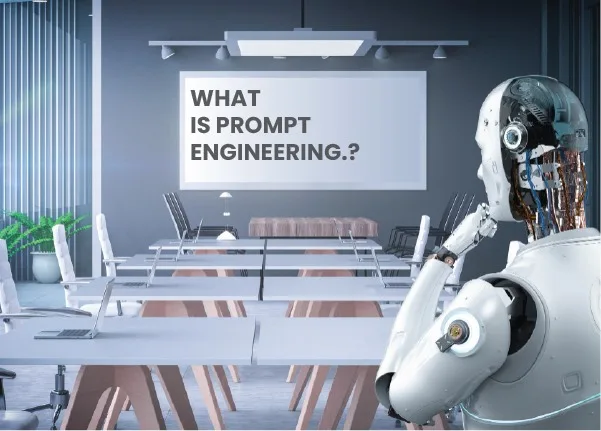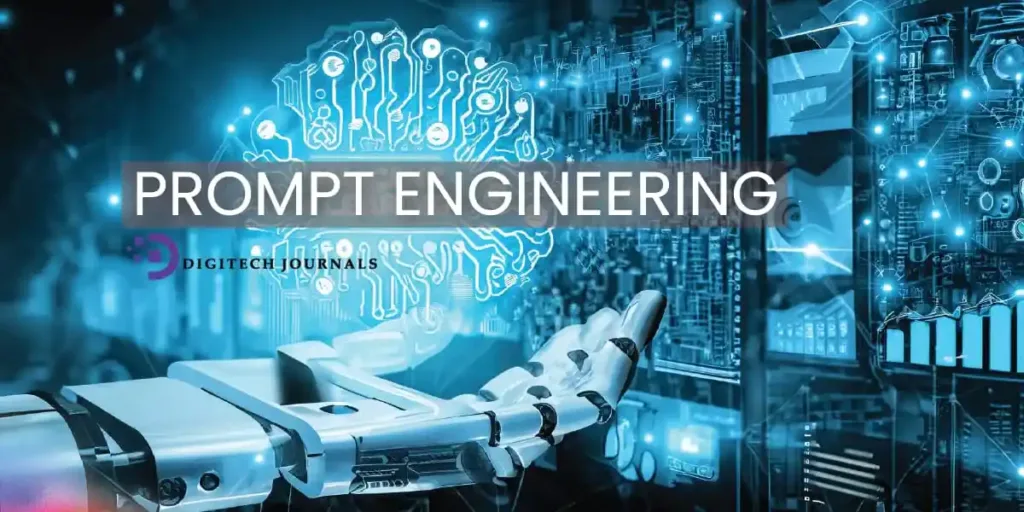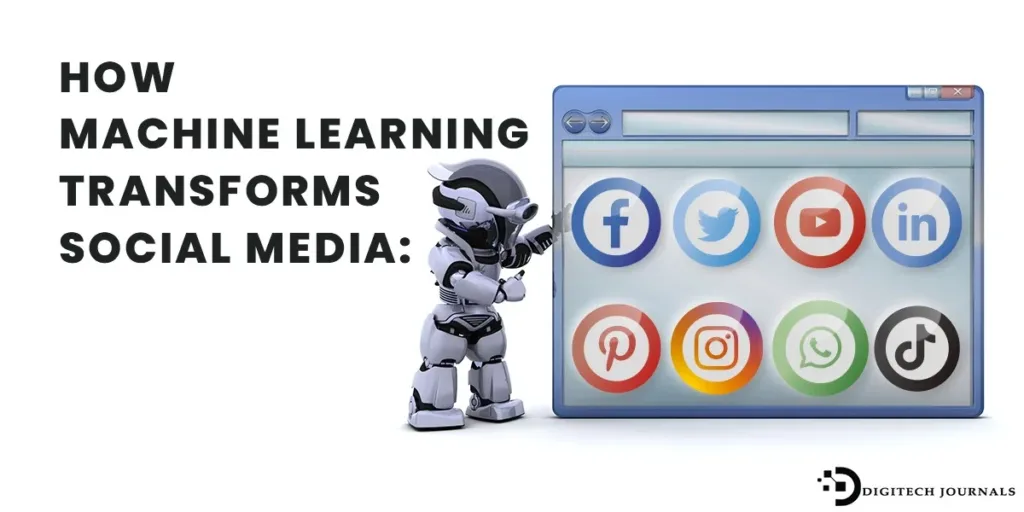- Prompt engineering is not just a buzzword of today; it’s a reality that shapes our present and a promising tomorrow. Every day, a multitude of individuals turn to Google, typing a common question into the search bar, ‘What Are the Most In-Demand Skills in 2023?‘ Well, my friends, there’s one skill that stands out, and that’s ‘Prompt Engineering.’ This skill is at the forefront because the future is undeniably AI-driven. In this era of freelancing, AI and prompt engineering are converging into one powerful force. To excel in the world of freelancing, harnessing Artificial Intelligence through prompt engineering is the key.
Now, let’s delve into what exactly prompt engineering entails and why it holds immense significance in the realm of Artificial Intelligence.”
In today’s digital age, artificial intelligence (AI) has become an indispensable part of our daily lives. From Alexa and ChatGPT to Instagram’s recommendation algorithm, AI technology powers many of the apps and services we use. But how does AI interpret and respond to our requests so intelligently? The secret lies in the future of artificial intelligence engineering and the field of “prompt engineering.”
What is Prompt Engineering?

In the current era of digital advancements, the future of artificial intelligence hinges on our ability to master prompt engineering. In simpler terms, prompt engineering can be described as the craft of creating precisely structured and thoughtfully worded instructions, which serve as a language for communication with AI. Rather than delving into intricate programming languages or complex code, prompt engineering involves the art of composing human-like sentences or queries, enabling AI systems and machine learning engineers, to grasp our objectives and furnish us with pertinent responses.
Why is Prompt Engineering Important?
Prompt engineering holds significant importance for a multitude of reasons, primarily serving as the vital link between human users and AI systems. This connection empowers us to engage with AI in a manner that feels more instinctive and user-friendly, expanding access to technology to a wider range of individuals. It’s no longer necessary to possess a background in computer science to inquire about the weather through Siri or request a favourite tune on Spotify.
Furthermore, A well-crafted artificial intelligence prompt can significantly improve the accuracy of AI-generated responses, ensuring that the information or solutions provided are more relevant and reliable. This, in turn, enhances user satisfaction and trust in AI systems.
What Are the Benefits of Prompt Engineering?

Prompt engineering offers a multitude of benefits, making it an indispensable component of AI development:
- Improved User Experience: By simplifying interactions with AI, prompt engineering makes technology more user-friendly and accessible. Users, including machine learning engineers, can effortlessly communicate their needs and receive meaningful responses.
- Enhanced Accuracy: Well-constructed prompts, including artificial intelligence prompts, lead to better AI performance. They reduce the chances of misinterpretation and enable AI to provide more precise answers, whether it’s answering questions, making recommendations, or generating content.
- Efficiency: Prompt engineering streamlines AI’s decision-making process, saving time and computational resources. This efficiency translates into faster response times and greater cost-effectiveness.
- Customization: With prompt engineering, developers, and machine learning engineers, can fine-tune AI systems to align with specific requirements and preferences. This level of customization allows AI to adapt to various industries and applications, from healthcare to finance.
- Continuous Improvement: As AI systems interact with users and receive feedback, prompt engineering enables iterative improvements. Over time, AI becomes more adept at understanding and fulfilling user requests.
To put it plainly, prompt engineering, including the creation of artificial intelligence prompts, quietly powers the incredible abilities of AI and machine learning engineers. It simplifies our interactions with technology, elevates AI’s effectiveness, and, at its core, enriches our daily experiences with precision and personalization.
The Basics of Prompt Engineering
Prompt engineering serves as the vital catalyst that empowers artificial intelligence, including machine learning engineers, to proficiently comprehend and react to human inquiries. At its essence, it revolves around the art of formulating unambiguous, succinct, and directive messages, steering AI systems and machine learning engineers toward achieving the intended results. Let’s now explore the fundamental principles.
How to Write a Good Prompt for Artificial Intelligence
The future of artificial intelligence relies heavily on prompt engineering, or the ability to create effective artificial intelligence prompts. Writing a good prompt is an art, and it’s essential to get it right. Let’s consider a few fundamental guidelines worth bearing in mind for a prompt engineering guide:
- Clarity is key. Make sure your artificial intelligence prompt is crystal clear and free of ambiguity. AI needs precise instructions to generate accurate results. Avoid vague language or jargon that might confuse the system.
- Be Specific: Specify what you want from the AI, whether you’re a machine learning engineer or a novice. If you’re seeking information, ask a straightforward question. If you need creative content, provide context and guidance.
- Use Natural Language: Write prompts in a way that mimics human conversation. AI is designed to understand and respond to natural language, so avoid overly technical or robotic phrasing.
- Consider Context: Think about the context in which the prompt will be used. Tailor your prompts to suit the particular AI application and its intended users, including machine learning engineers.
Different Types of prompts
Prompt engineering encompasses various types of prompts, each serving a specific purpose, whether you’re a seasoned machine learning engineer or just starting your journey:
- Instructional Prompts: These prompts provide clear guidance to AI, telling it exactly what to do. For instance, a clear example is when we instruct AI with prompts like, “Translate the given text from English to French.”
- Clarification Prompts: Clarification prompts are used by AI when it requires more information to complete a request. For example, it might ask for additional details about your chosen travel destination.”
- Generative Prompts: These prompts are used to instruct AI to create something, like a poem, story, or piece of code. They require careful wording to elicit the desired output, a challenge often faced by machine learning engineers.
- Question Prompts: If you’re seeking information or answers, question prompts are your go-to. They should be concise and directly related to the topic, a technique highly relevant for machine learning engineers.
How to Test and Improve Your Prompts in Prompt Engineering
Refining and testing prompts are crucial stages in prompt engineering. The following is a guide on how to perform these steps effectively, regardless of whether you are a novice or an experienced machine learning engineer.
- Collect Feedback: Gather feedback from users who interact with your AI system, including machine learning engineers. Analyze their interactions to identify areas for improvement.
- Benchmarking: Compare the performance of different prompts to see which ones yield better results for both machine learning engineers and AI. Consider metrics like accuracy, relevance, and user satisfaction.
- A/B Testing: Conduct A/B tests where you use two different prompts for the same task, a valuable technique for machine learning engineers and AI experts. This helps you determine which prompt is more effective in achieving your goals.
- Iterate and Optimize: Based on feedback and testing results, continuously refine your prompts. Adjust wording, structure, and formatting to enhance AI’s responses and streamline the work of machine learning engineers.
In the world of AI, prompt engineering, including the creation of artificial intelligence prompts, is the linchpin that ensures a seamless connection between humans and machines. By mastering the art of prompt construction and continually fine-tuning your approach, you can unlock the full potential of AI and provide users, including machine learning engineers, with more accurate, efficient, and satisfying experiences.
Case Studies of Prompt Engineering: Shaping the Future of Artificial Intelligence
In the current digital era, having a grasp on prompt engineering is essential to comprehending the future of artificial intelligence. We will examine real-life examples and case studies that demonstrate how prompt engineering is already making significant increase changes in the AI landscape.
Creating Realistic Chatbots with Artificial Intelligence prompts
Case Study: Chat GPT by OpenAI
One of the most remarkable achievements in prompt engineering is the creation of ChatGPT by OpenAI. By meticulously engineering prompts and conducting extensive training, ChatGPT has evolved into a chatbot that can hold meaningful and realistic conversations with users, including machine learning engineers. Its ability to provide accurate responses in a conversational manner has made it a valuable tool for customer support, virtual assistants, and more.
Generating Creative Text Formats with Prompt Engineering.
Case Study: AI-Poet by Poet Assistant
Prompt engineering has also been used to inspire creativity in AI. The AI-Poet by PoetAssistant is an excellent example. By crafting prompts that specify desired themes, styles, or emotions, users, including machine learning engineers, can request original poems tailored to their preferences. Prompt engineering empowers AI to become a virtual poet, generating beautiful verses on demand.
Case Study: Code Generation
Prompt engineering isn’t limited to artistic endeavours. In the hands of developers and machine learning engineers, it wields formidable power. For instance, with the right prompt, AI can generate complex code snippets, making programming tasks faster and more efficient. Companies like GitHub have leveraged prompt engineering to develop tools that assist developers, including machine learning engineers, in coding tasks.
Case Study: Music Composition
Music enthusiasts and composers can also benefit from prompt engineering. AI-driven music composition tools like Amper Music use prompts to generate musical pieces that align with users’ preferences and requirements. This opens up new possibilities for musicians and content creators.
Solving Real-World Problems
Case Study: Medical Diagnosis
In the field of healthcare, prompt engineering has proven invaluable. AI master key systems are being trained to assist doctors in diagnosing diseases. Physicians can provide a detailed patient history as a prompt, and the AI can analyze the information, suggest potential conditions, and recommend further tests or treatments. This enhances diagnostic accuracy and speeds up the decision-making process.
Case Study: Financial Forecasting
Prompt engineering has also made waves in the financial sector. AI models can be prompted with historical financial data and market trends to generate forecasts and investment strategies. Financial institutions are using prompt-driven AI to make informed decisions about investments, risk assessment, and portfolio management.
These case studies exemplify the flexibility and effectiveness of prompts. It goes beyond theory, serving as a practical tool that empowers AI master key to transform our modes of communication, facilitate creativity, and tackle intricate challenges across various sectors. With ongoing technological advancements, we anticipate witnessing an array of inventive applications in prompt engineering that will further mold the destiny of AI. Keep an eye out for additional revelations as we navigate the ever-evolving landscape of AI and the art of prompt engineering.
The Future of Prompt Engineering
Standing at the crossroads of artificial intelligence and human interaction, prompt engineering is primed to assume an even more central role in defining the trajectory of AI’s future. Let’s delve into the prospects that await, the dynamic evolution of this domain, and the myriad challenges and opportunities it ushers in.
How Prompt Engineering is Evolving
- Fine-tuning and Specialization: Prompt engineering is becoming more specialized. Developers are tailoring prompts to suit specific tasks, industries, and even user preferences. This fine-tuning enhances AI’s ability to generate accurate and context-aware responses.
- Multimodal Inputs: The horizon of prompt engineering extends beyond text-based prompts; it’s venturing into the realm of multimodal inputs encompassing text, images, audio, and beyond. This expansion empowers AI master key to comprehend and engage with a wider spectrum of human interactions.
- Hybrid Models: The convergence of prompt engineering with hybrid models, such as GPT-4, is on the horizon. These models combine the power of large-scale pre-training with prompt-guided fine-tuning, promising even more impressive results in various applications.
Challenges and Opportunities for Prompt Engineering
- Bias and Fairness: One of the pressing challenges is addressing bias in prompt engineering. Inadvertently, AI systems may uphold biases inherent in their training data. Ensuring fairness and equity in AI responses will be an ongoing concern.
- Data Privacy: As AI becomes more personalized, concerns about data privacy and security are heightened. Balancing the need for customization with respecting user privacy is a delicate challenge.
- Human-AI Collaboration: There’s an opportunity for greater collaboration between humans and AI in prompt engineering. Human expertise is crucial in crafting effective prompts, and AI can assist in generating more contextually relevant content.
- Real-World Applications: Prompts have enormous potential for addressing real-world problems. From climate modeling to disaster response, AI-driven solutions are emerging. The challenge is to ensure these applications are robust and reliable.
- Ethical Considerations: The ethical use of prompts is a constant consideration. Ensuring responsible AI behavior and preventing misuse is a critical aspects of its evolution.
Prompt engineering is at the forefront of the AI revolution, guiding the way we interact with and harness the power of artificial intelligence. Its future holds promise in reshaping industries, solving complex challenges, and enhancing user experiences. However, it also brings forth the responsibility to address biases, ensure privacy, and uphold ethical standards. As prompt engineering continues to evolve, it will undoubtedly play a pivotal role in defining the future of AI and how it enriches our lives.
The Crucial Role of Prompt Engineering in Shaping the Future of AI
In our journey through the intricate world of prompt engineering, we’ve discovered not only its fundamental principles but also the remarkable impact it has already had and the even greater capability it holds for the future of artificial intelligence. In this concluding chapter, we emphasize the pivotal role of prompt engineering in the grand narrative of AI’s evolution and its profound importance.
The Importance of Prompt Engineering in the Future of AI

Prompt engineering isn’t merely a technical aspect of AI development; it’s the linchpin that connects human intentions with machine capabilities. Here’s why it’s paramount to shaping AI’s future:
- Enhanced User Experiences: As AI becomes increasingly integrated into our daily lives, its ability to understand and respond to human queries in a natural, user-friendly manner is crucial. Prompt ensures that AI interactions are intuitive and satisfying, making technology accessible to everyone.
- Improved Accuracy and Efficiency: The precision and effectiveness of AI systems are significantly bolstered by well-crafted prompts. Clear and concise instructions empower AI to provide more accurate and relevant responses, thereby boosting efficiency in various applications.
- Customization and Adaptability: Prompt engineering allows AI master key to be tailored to specific industries and tasks. This customization enhances AI’s adaptability, making it a versatile tool for fields as diverse as healthcare, finance, creative arts, and more.
- Solving Real-World Problems: The real-world applications of prompt engineering are profound. From medical diagnoses to financial forecasting, AI-driven prompts carefully constructed by humans are helping us tackle complex problems with speed and accuracy.
- Ethical and Responsible AI: Prompt engineering plays a crucial role in ensuring that AI behaves ethically and responsibly. By guiding AI systems with thoughtfully designed prompts, we can mitigate biases, respect user privacy, and uphold ethical standards.
Within the ever-changing terrain of AI, prompt serves as a dynamic and adaptive force, evolving to address the increasing requirements of a world driven by AI. It transcends the realm of mere technicality; instead, it acts as the conduit that links our human creativity with the boundless capabilities of artificial intelligence.
As we gaze into the horizon of the future, we foresee prompt engineering’s ongoing evolution, marked by increased specialization, versatility, and a strong commitment to ethical principles. This progression will empower AI to comprehend diverse forms of input, broaden its reach into practical, real-world applications, and further amplify its collaborative potential alongside human ingenuity. In this exhilarating journey, one certainty emerges: prompt engineering will play a pivotal role in sculpting AI’s destiny, enriching our lives, and extending the frontiers of the achievable. Join us as we venture deeper into the expansive realms of AI and prompt engineering, uncovering fresh opportunities and groundbreaking innovations in this captivating domain.
Key Queries.
Q1: What exactly is prompt engineering, and why is it crucial in AI development?
A1: Prompt engineering is the art of crafting precise and clear instructions for AI systems to generate desired outputs. It’s vital because it bridges the gap between human intent and machine capabilities, making AI master key interactions intuitive and effective.
Q2: How can prompt engineering benefit machine learning engineers?
A2: Prompt engineering empowers machine learning engineers to harness the full potential of AI. It simplifies communication with AI systems, enhances accuracy, and streamlines the customization of AI for various industries.
Q3: What types of prompts are commonly used in prompt engineering?
A3: Common prompt types include instructional prompts (directing AI on what to do), clarification prompts (seeking additional information), generative prompts (instructing AI to create content), and question prompts (used for seeking information).
Q4: What challenges does prompt engineering face in long term bias and ethics?
A4: Addressing bias in prompt engineering is crucial to ensuring fair and unbiased AI master key responses. Ethical considerations include privacy concerns and responsible AI behavior.
Q5: How is prompt engineering evolving in the future of AI?
A5: Prompt engineering is evolving through fine-tuning, specialization, multimodal inputs (beyond text), and the integration of hybrid models like GPT-4, promising even more impressive results in various applications.
Q6: What are some real-world applications of prompt engineering?
A6: Prompt engineering is applied in creating chatbots, generating creative content like poems and code, aiding in medical diagnosis, financial forecasting, and addressing real-world problems in various industries.
Q7: How can I get started with prompt engineering or learn more about it?
A7: To start with prompt engineering, explore online resources, courses, and tools related to AI and natural language processing. Join AI communities and engage in discussions with experts in the field.
In Conclusion.
Shaping the Future of AI with Prompt Engineering
Prompt is the beacon guiding us through the vast landscape of artificial intelligence. It transforms our interactions with technology, empowers machine learning engineers, and promises a future where AI becomes an indispensable and trustworthy companion in our daily lives.
As we delve deeper into harnessing the potential of AI master key through prompt engineering, allow your curiosity to lead the way. Dive into this dynamic field, absorb knowledge, and actively participate.
Share your insights, personal experiences, and inquiries in the comments section. Together, we embark on a journey to sculpt the future of AI, forging a path toward a more interconnected, intelligent, and thrilling world.



